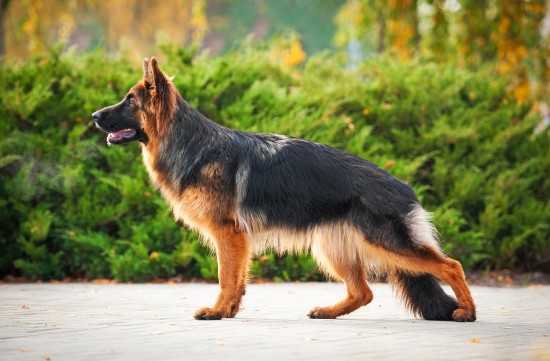
Traveling with a dog can be tough. Dogs can experience apprehension, over-excitement, dread, nausea and downright fear when they are forced to travel. Some dogs actually are nomadic in nature, and so might love to travel, but bark at people or other animals, are restless, or attempt to escape while traveling. Planning your trip carefully will enable you to relax and enjoy your trip more fully, and enable your dog to be secure and happy for the duration of the ride.
It is always wise before traveling to have your dog seen by a veterinarian. This is especially true if you are traveling across state lines or into other countries. Your vet will check for illnesses, injuries or conditions that might preclude your dog from travel. Upon request, your veterinarian will provide you with a certificate of health, and a copy of your dogs’ Rabies vaccination. These documents are necessary to gain entry into other countries. While receiving vaccinations, you should also ask your vet to vaccinate your dog against Bordatella and parvovirus, as some areas that you may be traveling to may have outbreaks of either or both.
If you will be flying with your dog, it is vital to have a clear understanding of the airline’s regulations concerning dogs. Most airlines insist that you use only airline-approved travel crates, that your dog’s documentation be posted to the side of the crate, and that the crate have 24-48 hours worth of food, and any needed medications. Beware that a large percentage of airlines have the 80 degree rule: if the temperature at any point along the flight is projected to reach eighty degrees or higher, your dog will not be permitted to fly.
Traveling by car with your dog can be a lot of fun. Ensure that you have all documents related to your dog on hand. Whenever traveling, be certain that your dog has a sturdy collar on, with at least one identification tag, and one registration or medical tag. The smart thing for both you and your dog while being transported in a car is for the dog to be secured. This prevents injury to the dog should you have to stop abruptly, and it prevents the dog from becoming airborne and smashing into you. It is not recommended that a dog ride in the back of a pick-up truck unless he is in a crate that is secured to the truck itself. Never leave a dog in a hot vehicle or crate.
Remember that when in the car, your dog should not be allowed to thrust its head out the window, as airborne particles of any nature could cause severe injury to your dog’s nose, eyes, or ears. If your dog is a nervous flyer or rider, you can obtain sedatives that aid in keeping your pet calm and cozy. Throughout the entire trip, make sure to help your dog feel as comfortable as possible; bring their toys and bedding with you, and adhere to their otherwise normal eating, exercise, and bathroom routine.
Do your research- educate yourself on places you may be able to visit with your dog, and also the places that you cannot. Some state parks, for example, do not allow dogs to be admitted. Many hotels, however, are quite pet-friendly, and will even make special accommodations for your dog.
Make certain that, when traveling with your dog, you take frequent breaks. Dogs need to stretch and take time out from being cooped up in the car, just like you do.
 The Delightful And Tiny Japanese Terrier
The Delightful An
The Delightful And Tiny Japanese Terrier
The Delightful An
 More Information On The Unusual Toyger Cat Breed
More Information
More Information On The Unusual Toyger Cat Breed
More Information
 Good Exercises For Your Dog’s Hindquarters
Good Exercises Fo
Good Exercises For Your Dog’s Hindquarters
Good Exercises Fo
 Collect Amazing Items to Delight Your Pets from the Best Online Pet Store
Collect Amazing Items to Delight Your Pets from the Best O
Collect Amazing Items to Delight Your Pets from the Best Online Pet Store
Collect Amazing Items to Delight Your Pets from the Best O
 The Secrets Behind A Cats Agility!
The Secrets Behin
The Secrets Behind A Cats Agility!
The Secrets Behin
Copyright © 2005-2016 Pet Information All Rights Reserved
Contact us: www162date@outlook.com